FLUX
UX Design
UI Design
Motion Graphics
Front-end Development
Back-end Development
Game Development
Who says playing games on your phone can't get you moving?
I worked with a team of 5 designers and 1 developer to create a game which we demoed at a festival. FLUX modifies mobile game controls to turn phone time into a workout.
Research
Millennials need a minimum of 22 minutes of physical activity a day, but only 50% reach this.
We noticed that millennials spend an average of 223 minutes on their phones a day.
A contributing factor to the huge difference could be that it takes constant effort over long periods of time to see the results of exercise. Compared to phone activities like social media and mobile games which give instant gratification, exercise doesn’t seem worth the time.
How could we leverage this behavior to transform phone time into physical activity?

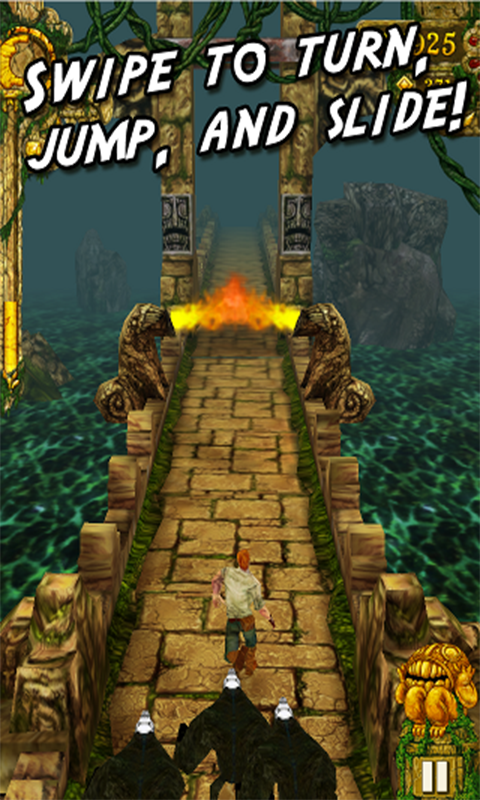

Inspiration
We found a potential solution in endless runner games like Temple Run or Subway Surfers.
In these games, players control a character with touch gestures to dodge obstacles on and endless path. But the in-game character is getting a workout by running and jumping.
the game
We decided to create FLUX, a mobile game that translates physical activity into game controls.
running in place
powers the game
tap to jump become
physically jumping
swipe to change direction becomes
turning your body
Technology
Movement Detection
We used the smartphone’s accelerometers to determine how much force was applied to the phone.
We compared the applied force to 2 thresholds. A force in between the thresholds means the player is running. Any force above the higher threshold indicates the player jumped.
Programs
Game — Unity
HUD graphics — After Effects
Obstacle — Unity
Environment — Cinema4D

Information Architecture

Features
Main Game
As a player, you are running down a path towards the sunset in another world. In this world, the terrain is alive and creates obstacles that you have to jump over.



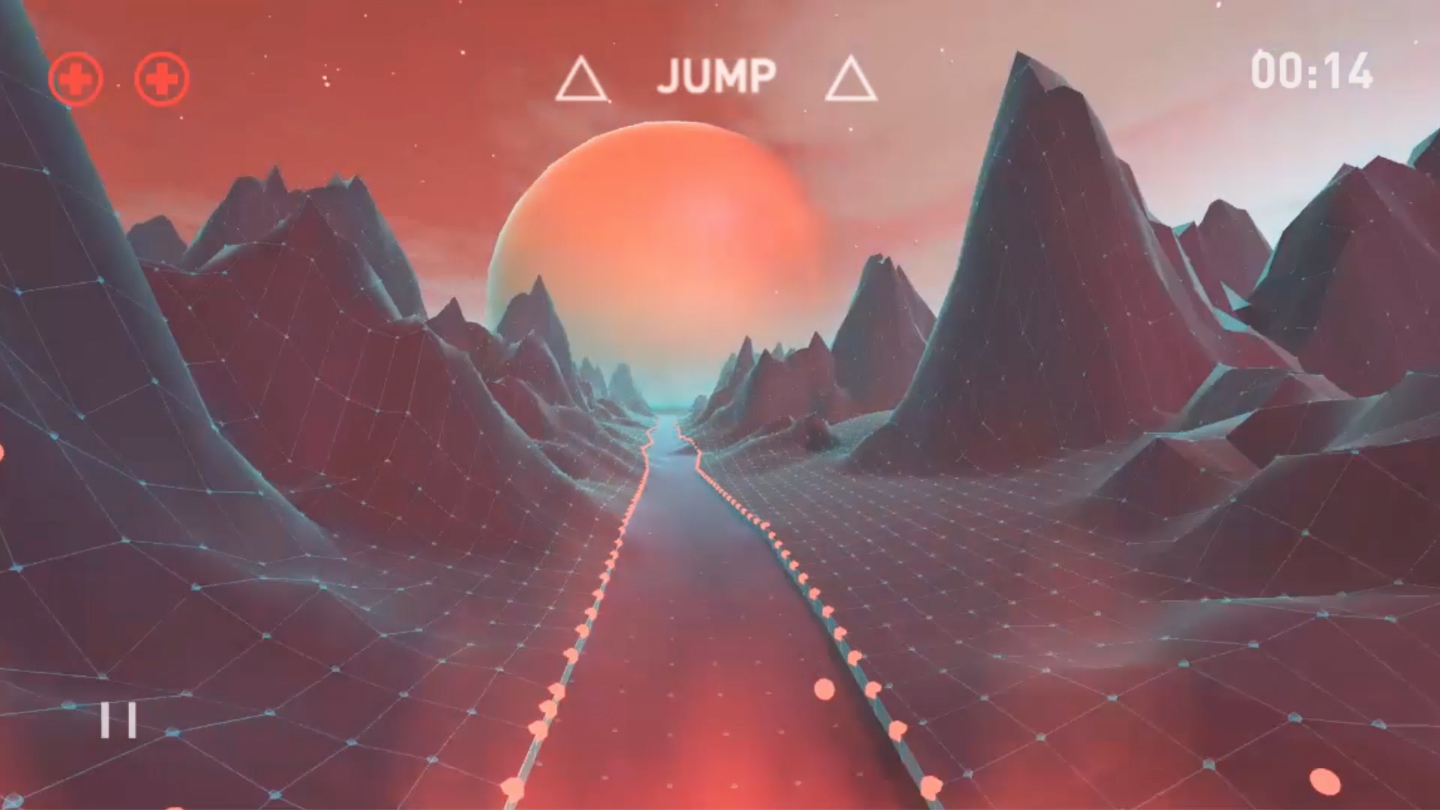
Goals
With each game session, players can see how they've been moving and work their way up to a daily target time. Then, they can keep track of whether they hit that goal with the activity tracker. Here, they can also adjust their goal time.
Rewards
To keep players motivated to stay on track to be more active, they can earn FLUX Facts cards at the end of a game. Each of these cards show how exercise can benefit your health. And they can easily be shared to spread the word.
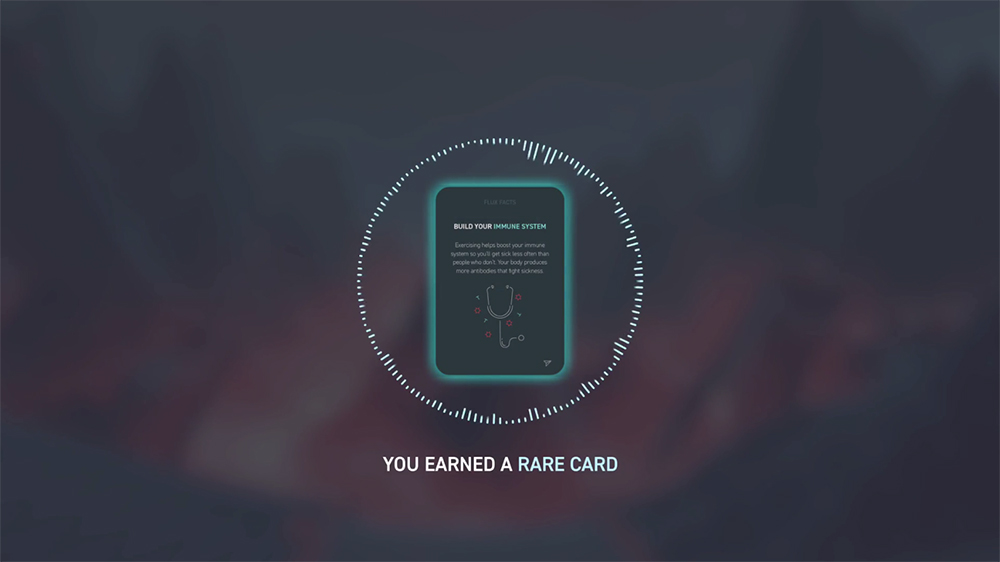

Improvements
Camera Control
We found that people were confused about how to turn back in the right direction after they veered off path. We should simplify the controls to just running and jumping.
Force Detection
Different people have different forces when they run or jump. For example, an adult running could exert the same force as a child jumping. If we were to add onboarding, we should add a step to detect each player’s forces more accurately.
website & scoreboard
Informational Website
From my teammates' mockups, I developed our website and added interactions like hover effects, parallax scroll, and a 3D model viewer for our handset.
Visit the site


Live Scoreboard
I designed and programmed a live scoreboard to show the state of each team and their total times.
The game sends data via a PHP script to an SQL database on RIT’s server. Meanwhile, the scoreboard website makes an AJAX call every 30 seconds to display the information.
Having this on display in our exhibit gave visitors a competitive edge, and it allowed us to track how many people came and how long they moved.
exhibit
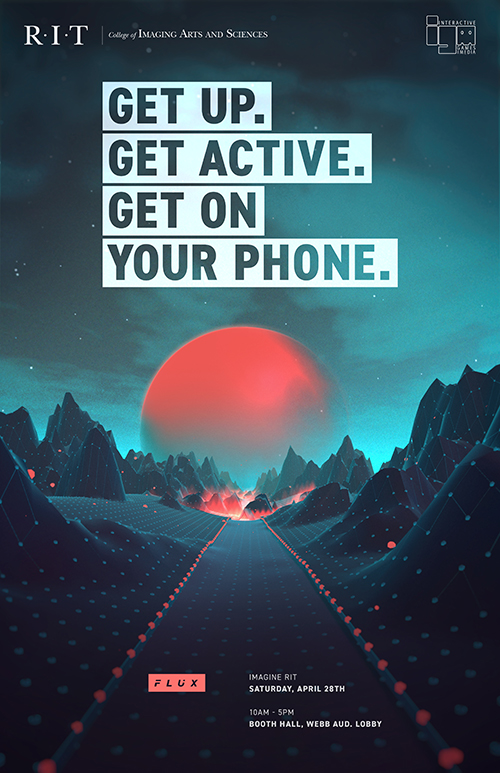
We demoed FLUX at Imagine RIT, a university festival open to the public community.
To create a full experience, we had computers around on which people can learn more about FLUX and our process. And we had extras like a live scoreboard and takeways.
Layout
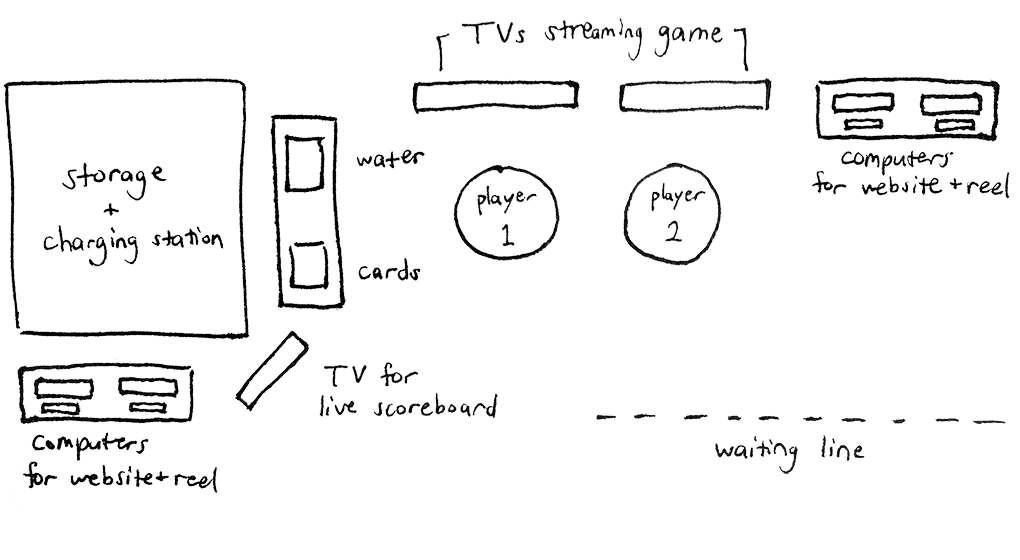
Custom Handset
To enhance the experience, our team’s industrial designer 3D printed custom handsets inspired by workout equipment.
This made it easier to run with your phone, and acts as a protective case if it drops.
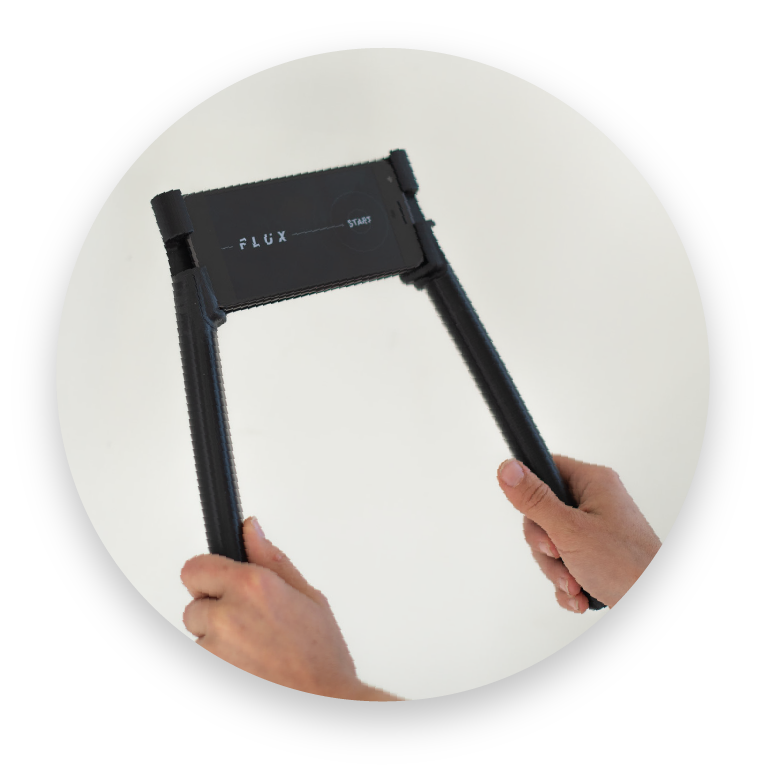

FLUX Facts
After every player finished a game, they would get a water bottle to stay hydrated and a FLUX Facts card.
Each card, like the game reward, shows a fact of how exercise benefits people to motivate players to keep moving.
Response
About 600 players ranging from age 4 to 84 visited our exhibit. Kids would finish and get back in line to play again, and friends would compete against one another.
At the end of the day, we tracked 466 minutes of activity on 2 test phones.
“It’s wonderful seeing my son up and active while on the phone”
“As someone who does not exercise, I would definitely exercise to this!”
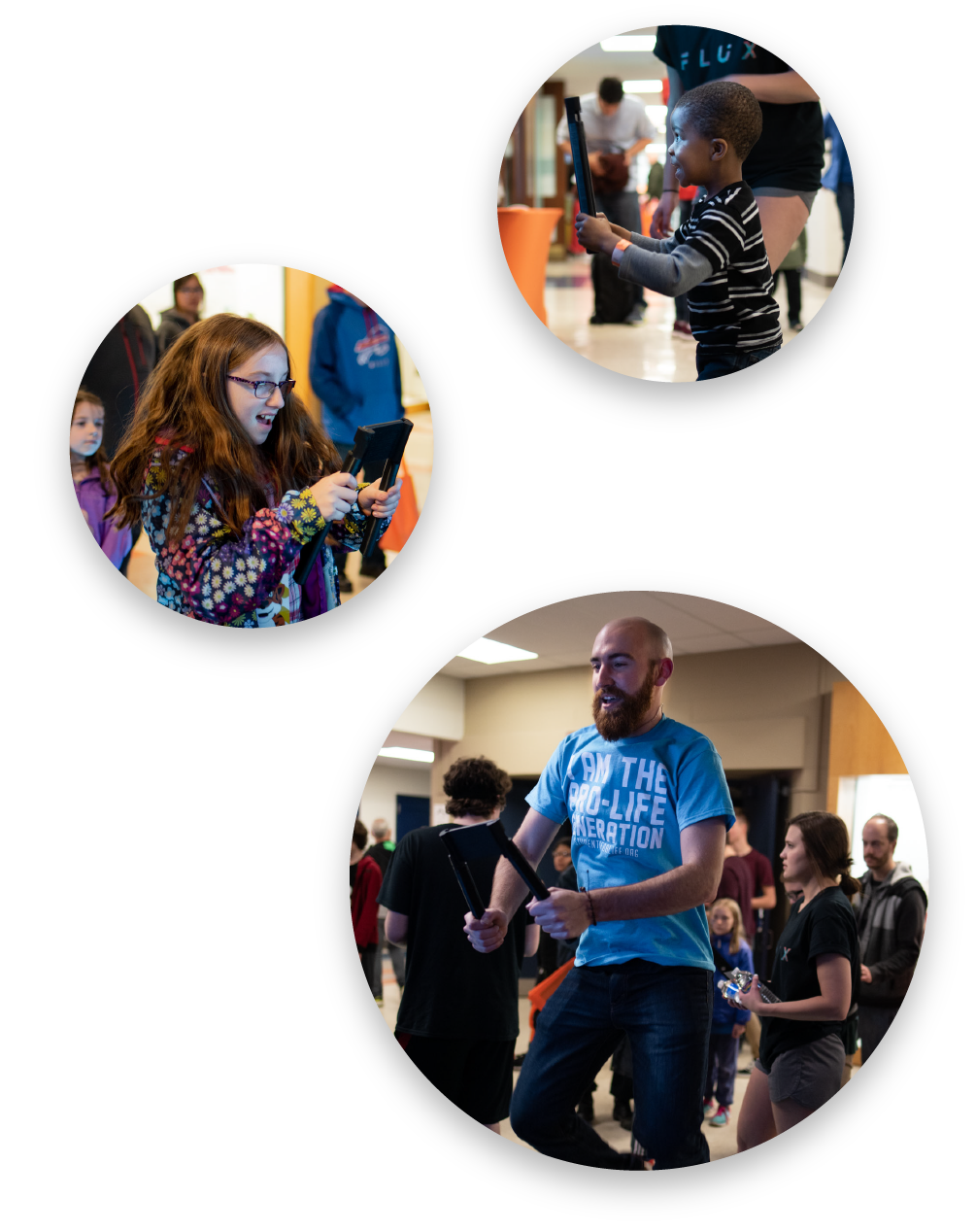
achievements
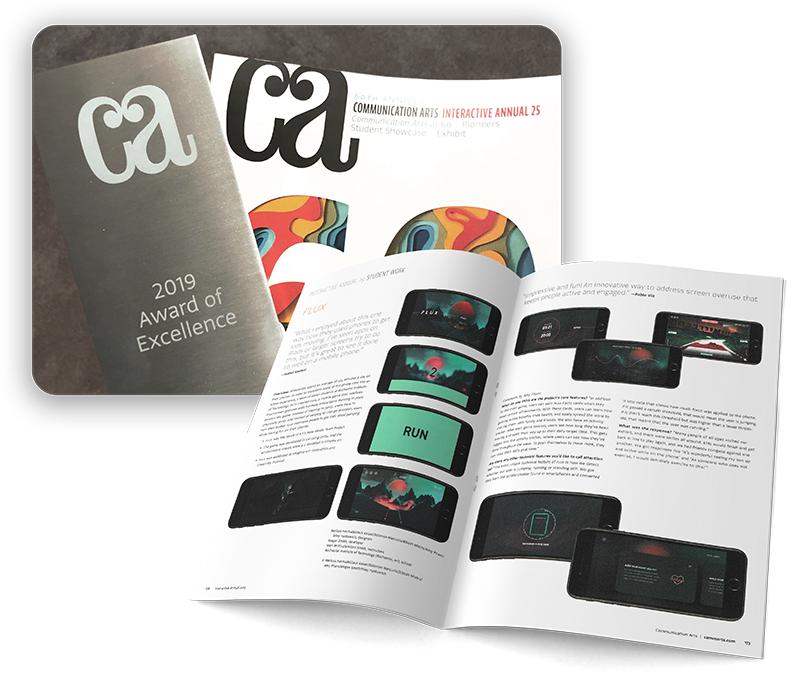
Featured in Communication Arts Magazine Interactive 2019
view articleAdobe Design Achievement Awards 2019 Semifinalist
view entryconclusion
This was a project where my role started with no clear boundaries. I learned to figure out what skills the team had, and what I could offer to bring our project to the next level. This was also my first time being part of an exhibit for a project, and it was amazing seeing so many people having fun together playing our game.